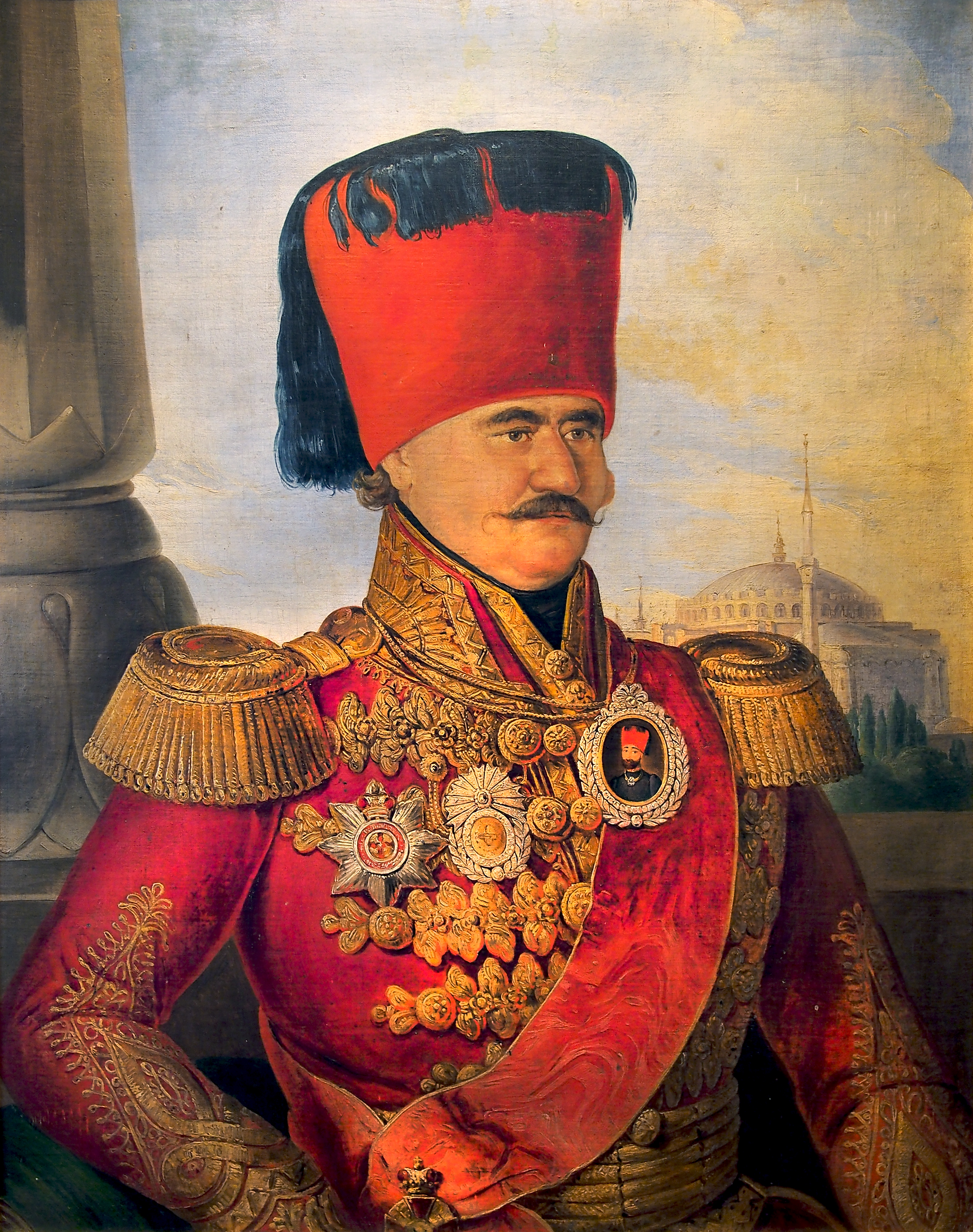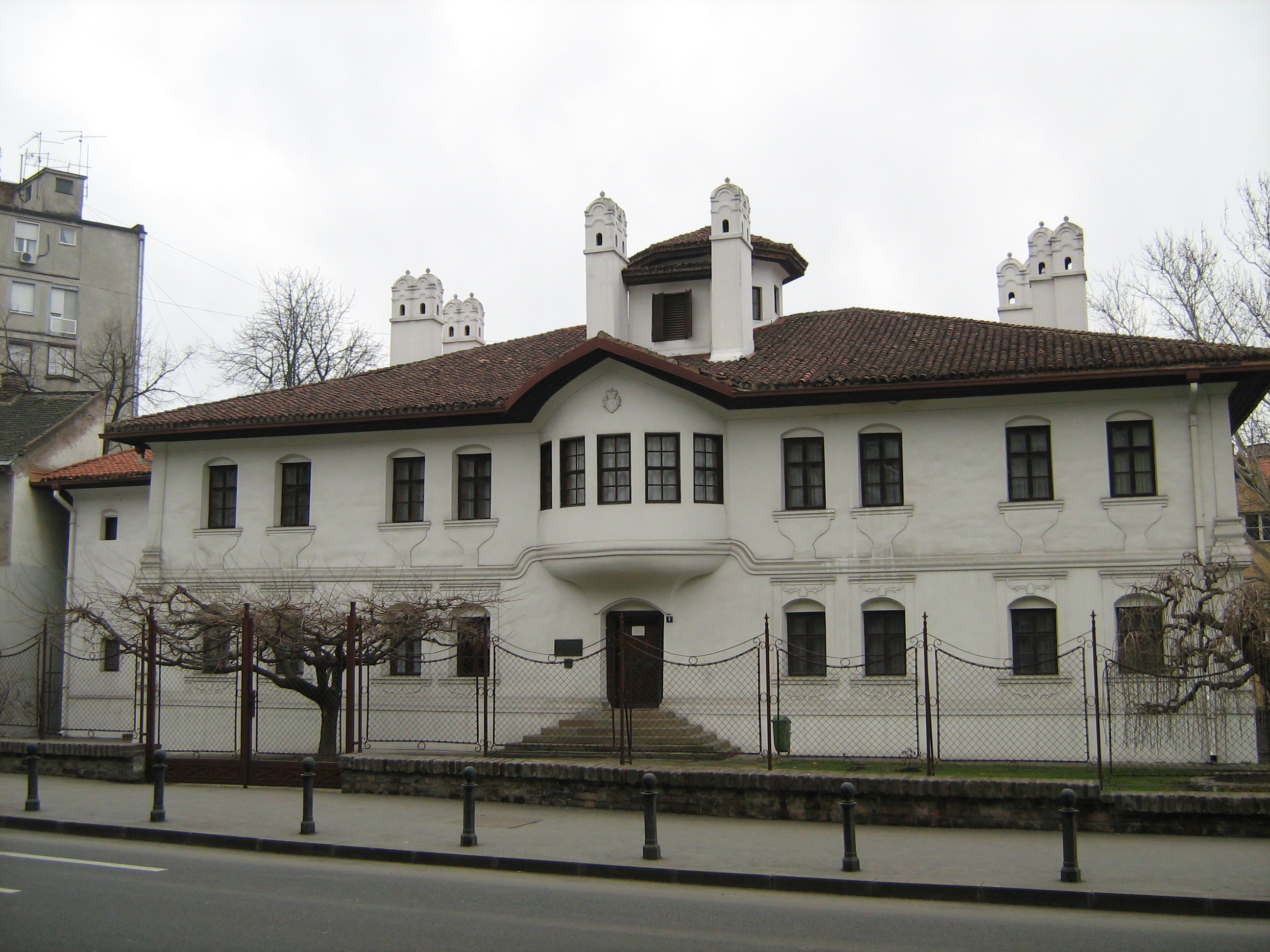|
Miloš Obrenović's House
Milošev Konak ( sr, Кућа Милоша Обреновића) is the residence of Serbian Prince Miloš Obrenović, which is located in Gornja Crnuća in the municipality of Gornji Milanovac, Serbia, and is one of the Monument of Culture of Exceptional Importance for Serbia, added in 2000. Gornja Crnuća can be considered first, but the temporary capital of Serbia since the prince Miloš Obrenović ruled Serbia for two years from that house. This house is of extreme importance because in it decision was made on raising the Second Serbian Uprising. Permanent exhibition in the house contains copies of documents, photographs and reproductions of several original artifacts related to the insurrectionist period. One of the dormitory has preserved the authentic atmosphere, a fireplace with a part of furniture and built in cocklestove furnace. See also *Monument of Culture of Exceptional Importance *Tourism in Serbia *House of Obrenović A house is a single-unit residential buil ... [...More Info...] [...Related Items...] OR: [Wikipedia] [Google] [Baidu] |
Gornja Crnuća
Gornja Crnuća ( sr-cyr, Горња Црнућа ) is a village located in Gornji Milanovac municipality of Serbia. In the 2002 census, it had 239 residents. There are several points of significance in the village. It is best known for the house of Miloš Obrenović in which the Second Serbian Uprising was started, in fact, the village was the Capital of what was then Principality of Serbia for two years, from 1815 until 1818. The house was the official residence of the Sovereign, the Vraćevšnica Monastery The Vraćevšnica Monastery ( sr, Манастир Враћевшница, Manastir Vraćevšnica, ) is a Serbian Orthodox monastery in Vraćevšnica, Gornji Milanovac, Serbia, built in 1428–29 on the orders of Radič ( fl. 1389–1441), a mag ... which is one of the more significant Serbian monasteries. There also is a well-stocked hunting range and a wonderful scenic hiking path. The village was deemed an Ecological Village within the Ecological Municipality of Gor ... [...More Info...] [...Related Items...] OR: [Wikipedia] [Google] [Baidu] |
Gornji Milanovac
Gornji Milanovac ( sr-Cyrl, Гoрњи Милановац, ) is a town and municipality located in the Moravica District of central Serbia. The population of the town is 24,216, while the population of the municipality is 44,406. The town was founded in 1853. Before 1859 the original name of the town was Despotovica ( sr-Cyrl, Деспотовица), after the Despotovica river passing by the town. In 1859 the name was changed to Gornji Milanovac at the request of the Prince of Serbia Miloš Obrenović. Its name means ''Upper Milanovac'' (there is a Lower Milanovac as well, while Milanovac stems from the name Milan in Serbian). History Initially, the settlement that was to become Gornji Milanovac (before 1853) was situated in the area of today's village Brusnica. There was some discussion about the suitability of the site for a settlement. The new municipality was to be called Despotovac after the river Despotovica which passes through this municipality (the river name origina ... [...More Info...] [...Related Items...] OR: [Wikipedia] [Google] [Baidu] |
Miloš Obrenović I Of Serbia
Prince Miloš Obrenović I of Serbia ( sr-Cyrl, Милош Обреновић I, Miloš Obrenović I; ; 18 March 1780 or 1783 – 26 September 1860) born Miloš Teodorović ( sr-Cyrl, Милош Теодоровић; ), also known as Miloš the Great ( sr-Cyrl, Милош Велики, Miloš Veliki) was the Prince of Serbia twice, from 1815 to 1839, and from 1858 to 1860. He was an eminent figure of the First Serbian uprising, the leader of the Second Serbian uprising, and the founder of the House of Obrenović. Under his rule, Serbia became an autonomous principality within the Ottoman Empire. Prince Miloš was an autocrat, consistently refusing to decentralize power, which gave rise to a strong internal opposition. During his rule, Miloš the Great bought a certain number of estates and ships from the Ottomans and was also a prominent trader. Despite his humble background, he eventually became the most affluent man in Serbia and one of the wealthiest in the Balkan peninsula, p ... [...More Info...] [...Related Items...] OR: [Wikipedia] [Google] [Baidu] |
Serbia
Serbia (, ; Serbian language, Serbian: , , ), officially the Republic of Serbia (Serbian language, Serbian: , , ), is a landlocked country in Southeast Europe, Southeastern and Central Europe, situated at the crossroads of the Pannonian Basin and the Balkans. It shares land borders with Hungary to the north, Romania to the northeast, Bulgaria to the southeast, North Macedonia to the south, Croatia and Bosnia and Herzegovina to the west, and Montenegro to the southwest, and claims a border with Albania through the Political status of Kosovo, disputed territory of Kosovo. Serbia without Kosovo has about 6.7 million inhabitants, about 8.4 million if Kosvo is included. Its capital Belgrade is also the List of cities in Serbia, largest city. Continuously inhabited since the Paleolithic Age, the territory of modern-day Serbia faced Slavs#Migrations, Slavic migrations in the 6th century, establishing several regional Principality of Serbia (early medieval), states in the early Mid ... [...More Info...] [...Related Items...] OR: [Wikipedia] [Google] [Baidu] |
Monuments Of Culture Of Exceptional Importance (Serbia)
Immovable Cultural Heritage of Exceptional Importance ( sr, Непокретна културна добра од изузетног значаја/) are those objects of Immovable cultural heritage that enjoy the highest level of state protection in the Republic of Serbia. Immovable Cultural Heritage is classified as being of Exceptional Importance upon decision by the National Assembly of Serbia. They are inscribed in the ''Central Register of Immovable cultural property'' maintained by the Institute for the Protection of Cultural Monuments of Serbia. Objects of Immovable cultural heritage have to fulfill one or more of those criteria defined in the ''Law on Cultural Heritage'' of 1994 in order to be categorized as being "of exceptional importance": # exceptional importance for social, historical or cultural development of the people, or for the development of its natural environment; # evidence of important historic events or persons and their work; # unique (rare) example of huma ... [...More Info...] [...Related Items...] OR: [Wikipedia] [Google] [Baidu] |
Second Serbian Uprising
The Second Serbian Uprising ( sr, Други српски устанак / ''Drugi srpski ustanak'', tr, İkinci Sırp Ayaklanması) was the second phase of the Serbian Revolution against the Ottoman Empire, which erupted shortly after the re-annexation of the country to the Ottoman Empire in 1813. The occupation was enforced following the defeat of the First Serbian Uprising (1804–1813), during which Serbia existed as a ''de facto'' independent state for over a decade. The second revolution ultimately resulted in Serbian semi-independence from the Ottoman Empire. The Principality of Serbia was established, governed by its own parliament, constitution and royal dynasty. ''De jure'' independence, however, was attained in 1878, following the decisions of the Congress of Berlin. Background The First Serbian Uprising liberated the country for a significant time (1804–1813) from the Ottoman Empire; for the first time in three centuries, Serbs governed themselves without the su ... [...More Info...] [...Related Items...] OR: [Wikipedia] [Google] [Baidu] |
Cocklestove
A masonry heater (also called a masonry stove) is a device for warming an interior space through radiant heating, by capturing the heat from periodic burning of fuel (usually wood), and then radiating the heat at a fairly constant temperature for a long period. Masonry heaters covered in tile are called cocklestoves (also tile stoves or ceramic stoves). The technology has existed in different forms, from back into the Neoglacial and Neolithic periods. Archaeological digs have revealed excavations of ancient inhabitants utilizing hot smoke from fires in their subterranean dwellings, to radiate into the living spaces. These early forms have evolved into modern systems. Evidence found from 5,000 B.C. of massive blocks of masonry used to retain heat foreshadowed early forms of fire hearths that were used as multifunctional heating sources. Later evolutions came in the Roman ''hypocaust'' and Austro-German cocklestove (''Kachelofen'', literally "tile oven", or ''Steinofen'', "ston ... [...More Info...] [...Related Items...] OR: [Wikipedia] [Google] [Baidu] |
Tourism In Serbia
Tourism in Serbia is officially recognized as a primary area for economic and social growth. The hotel and catering sector accounted for approximately 2.2% of GDP in 2015. Tourism in Serbia employs some 75,000 people, about 3% of the country's workforce. In recent years the number of tourists is increasing, especially foreign ones for about hundred thousand arrivals more each year. In 2019, tourism generated an income of nearly $1.698 billion, hosting 3 million and seven hundred thousand tourists, half of whom were foreigners. Chinese tourists were the most numerous foreign visitors, followed by tourists from Bosnia and Herzegovina, Bulgaria, Turkey, and Germany. Major destinations for foreign tourists are Belgrade, Novi Sad and Niš, while domestic tourists prefer spas and mountain resorts. Eco-friendly and sustainable tourism has also become very popular among domestic tourists, with many young people visiting various nature reserves and parks in the western and southern part of ... [...More Info...] [...Related Items...] OR: [Wikipedia] [Google] [Baidu] |
Obrenović Dynasty
The House of Obrenović ( sr-Cyrl, Обрeновић, Obrenovići / Обреновићи, ) was a Serbian dynasty that ruled Serbia from 1815 to 1842, and again from 1858 to 1903. They came to power through the leadership of their progenitor Miloš Obrenović I in the Serbian Uprising of 1815–1817 against the Ottoman Empire, which led to the formation of the Principality of Serbia in 1817. The Obrenović dynasty were traditionally allied with Austria-Hungary and opposed the Russian-supported Karađorđević dynasty. The family's rule came to an end in a coup d’état by the military conspirators, often known today as the Black Hand, who invaded the royal palace and murdered King Alexander I, who died without an heir. The National Assembly of Serbia invited Peter Karađorđević to become king of Serbia. After the breakup of Yugoslavia, some descendants from Jakov Obrenović, Miloš Obrenović's half-brother, declared themselves successors of the Royal House of Obrenović ... [...More Info...] [...Related Items...] OR: [Wikipedia] [Google] [Baidu] |
Cultural Monuments Of Exceptional Importance (Serbia)
Immovable Cultural Heritage of Exceptional Importance ( sr, Непокретна културна добра од изузетног значаја/) are those objects of Immovable cultural heritage that enjoy the highest level of state protection in the Republic of Serbia. Immovable Cultural Heritage is classified as being of Exceptional Importance upon decision by the National Assembly of Serbia. They are inscribed in the ''Central Register of Immovable cultural property'' maintained by the Institute for the Protection of Cultural Monuments of Serbia. Objects of Immovable cultural heritage have to fulfill one or more of those criteria defined in the ''Law on Cultural Heritage'' of 1994 in order to be categorized as being "of exceptional importance": # exceptional importance for social, historical or cultural development of the people, or for the development of its natural environment; # evidence of important historic events or persons and their work; # unique (rare) example of hum ... [...More Info...] [...Related Items...] OR: [Wikipedia] [Google] [Baidu] |
Architecture In Serbia
The architecture of Serbia has a long, rich and diverse history. Some of the major European style from Roman to Postmodern are demonstrated, including renowned examples of Raška, Serbo-Byzantine with its revival, Morava, Baroque, Classical and Modern architecture, with prime examples in Brutalism and Streamline Moderne. Centuries of turbulent history of Serbia caused a great regional diversity and favored vernacular architecture. This made for a heterogeneous and diverse architectural style, with architecture differing from town to town. While this diversity may still be witnessed in small towns, the devastation of architectural heritage in the larger cities during World War II, and subsequent socialist influence on architecture resulted in specific mix of architectural styles. Prehistoric period Numerous civilizations and cultures resided on the territory of Serbia prior to the arrival of the Romans. Best known ones were Starčevo, Iron Gates and Vinča cultures, dating ... [...More Info...] [...Related Items...] OR: [Wikipedia] [Google] [Baidu] |







